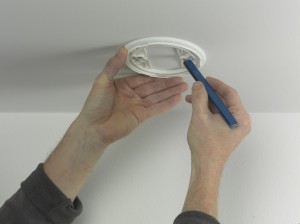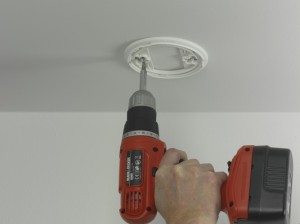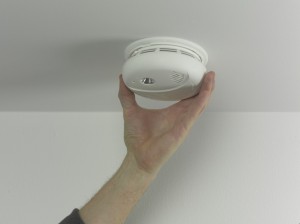Fitting a smoke alarm
A battery operated smoke alarm is quick and easy to fit. There are different types available and always follow manufacturers’ guidelines precisely when positioning them. Battery operated alarms should be checked and maintained regularly. The following guide shows a typical sequence for fitting a smoke alarm.
 |
1. Ideally find a ceiling joist, then mark fixing points with a pencil. You can use a cable, pipe and stud detector to help with finding safe and secure positioning. |
 |
2. If you cannot find a joist, you can still attach an alarm, but to make a secure fixing, use hollow wall plugs. These are generally supplied with the alarm. Drill pilot holes and insert the plugs. |
 |
3. Designs vary, but in this example you need to secure the backing plate for the alarm unit securely in position. Do not overtighten. |
 |
4. Fit the main body of the alarm following the manufacturer’s guidelines. Fit and test the battery to make sure the alarm is working. |
Some smoke alarm considerations
- First, identify the smoke alarm(s) that you require.
- Ionisation smoke alarms detect fast burning fires with flames. Place them in a lounge or bedroom but avoid locations in or close to a kitchen or bathroom.
- Photoelectric or optical smoke alarms detect smouldering slow burning fires and smoke rather than flames and are best for halls or landings.
- Heat alarms are activated by temperatures above 57 degrees C or 135 degrees F and are designed for kitchens or garages to minimise unwanted alarms.
- As well as fitting smoke alarms, also remember to fit carbon monoxide alarms if you have any fuel burning appliances in your home.
